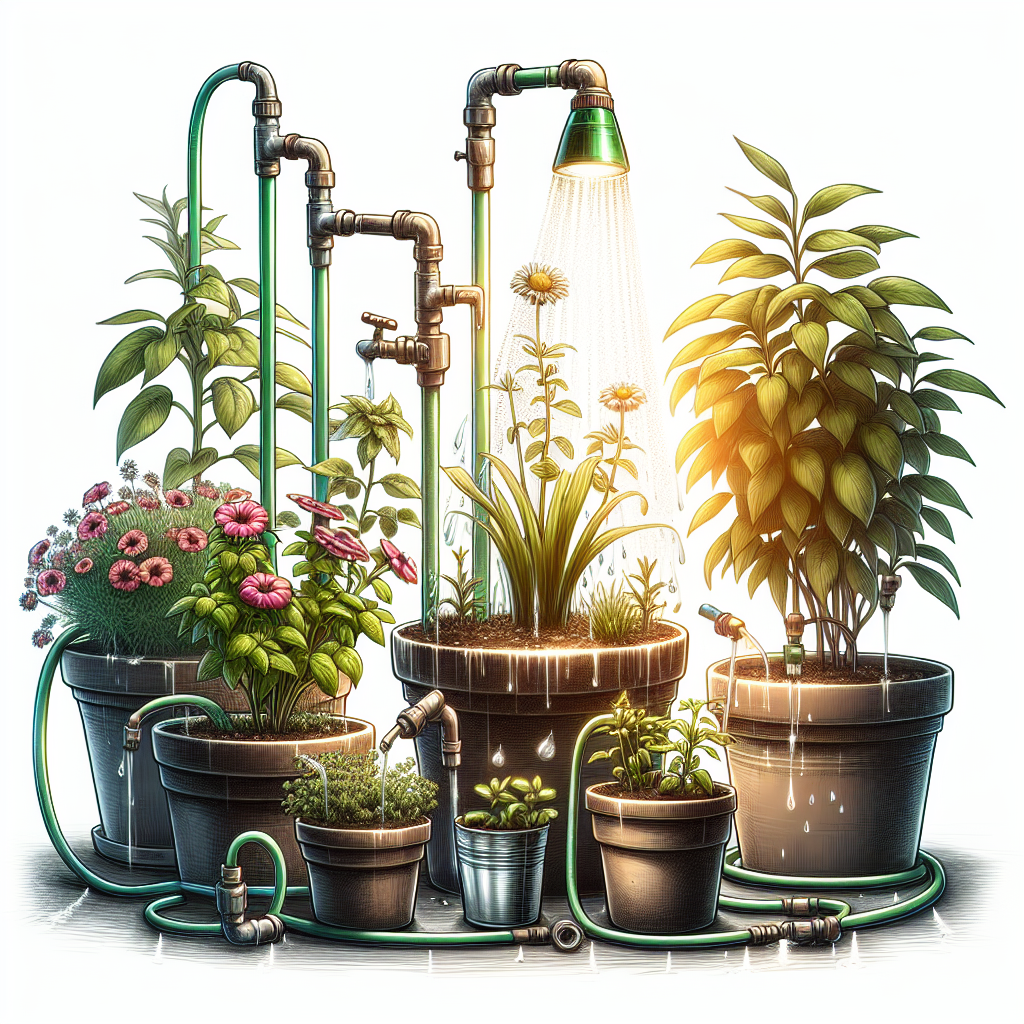Maximizing Plant Growth with Slow Drip Irrigation for Pots
Gardening enthusiasts and plant lovers often find themselves tackling the challenge of providing the ideal watering conditions for potted plants. With so many irrigation techniques available, it can be overwhelming to choose the most effective method. One method that has gained popularity in recent years is slow drip irrigation. This article explores the benefits of slow drip irrigation for potted plants and how it can maximize plant growth.
What is Slow Drip Irrigation?
Slow drip irrigation, also known as micro-irrigation or trickle irrigation, is a watering technique that delivers water to plants slowly and directly at their roots. This method uses a system of tubes, emitters, or drippers to distribute water gradually over an extended period. Unlike traditional overhead watering methods that can lead to wasted water and surface runoff, slow drip irrigation minimizes evaporation and ensures efficient water usage.
Advantages of Slow Drip Irrigation for Pots
1. Water Conservation: One of the primary benefits of slow drip irrigation is its ability to conserve water. By delivering water directly to the plant’s roots, it reduces evaporation and prevents wastage caused by wind or surface runoff. Additionally, slow drip systems are often equipped with timers and automatic shut-off valves, allowing precise control over watering durations and frequencies.
2. Nutrient Retention: Slow drip irrigation enables nutrients to seep into the soil gradually. Unlike conventional watering methods that can wash away essential nutrients from the soil’s surface, slow drip systems ensure that plants absorb nutrients effectively through their root zones. This promotes healthy growth and reduces the need for additional fertilizers.
3. Prevents Overwatering: Overwatering is a common problem faced by potted plant owners as it can lead to root rot and other diseases. Slow drip irrigation helps prevent overwatering by providing a controlled amount of water directly to the plant’s roots at a slow pace. This method allows the soil to absorb and retain water efficiently, preventing excess moisture that can harm the plant.
4. Consistent Moisture Levels: Maintaining consistent moisture levels is essential for the healthy growth of plants. Slow drip irrigation provides a consistent supply of water to the plants throughout the day, ensuring that they receive enough moisture without being flooded or drying out. This consistency can significantly benefit plant growth, particularly for delicate or sensitive species.
5. Customizable Irrigation: Slow drip irrigation systems offer flexibility and customization options to cater to different plant needs. The number and location of emitters or drippers can be adjusted based on individual plant requirements. This versatility enables gardeners to target specific areas, ensuring that all plants receive adequate water without any wastage.
6. Reduced Weed Growth: Traditional overhead watering methods often lead to weed growth due to excessive surface watering. Slow drip irrigation minimizes surface wetting and deprives weeds of their preferred conditions for growth. By applying water directly to the plant’s root zone, slow drip systems effectively reduce weed competition for nutrients and sunlight.
How to Implement Slow Drip Irrigation
Implementing slow drip irrigation for potted plants is relatively straightforward. Here are some steps to get started:
1. Choose the Right Equipment: Select a suitable slow drip irrigation system based on your pot size, number of pots, and specific requirements. There are various options available, including adjustable drippers, porous pipes, or soaker hoses.
2. Prepare the System: Assemble the chosen equipment according to the manufacturer’s instructions. Attach emitters or drippers at appropriate intervals along the tubes or pipes based on your plant’s size and watering needs.
3. Positioning: Place the tubing or pipes around each pot in a manner that ensures uniform distribution of water throughout all pots in your garden space.
4. Water Source: Connect the system securely to a stable water source such as an outdoor faucet or a rainwater tank. Consider using a water filter to prevent clogging of the drip emitters due to mineral deposits.
5. Test and Adjust: Run the system and observe the water flow. Make any necessary adjustments to ensure an even distribution across all pots. It may take some trial and error to find the optimal settings for your plants.
Conclusion
Slow drip irrigation is a highly effective method for maximizing plant growth in potted plants. By conserving water, promoting nutrient retention, preventing overwatering, maintaining consistent moisture levels, offering customization options, and reducing weed growth, slow drip irrigation provides optimal conditions for healthy plant development. Implementing this technique is relatively straightforward and can significantly benefit both novice and experienced gardeners alike. So, why not give slow drip irrigation a try? Your potted plants will thank you with flourishing growth and vibrant vitality.














